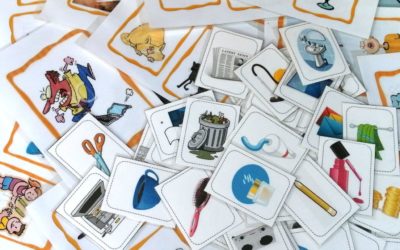‘my first experience as a teacher was not something to boast about’
Teaching young lao kids was a dream come true! Those little lao faces staring at you were so irresistibly adorable and cute… for a couple of weeks. Then things became more complicated, keeping them focused as they were in dire need of moving around was a real challenge. I was overwhelmed with rambunctious kids that I had expected to be polite, calm, and respectful as I had in mind this stereotype of Asian children. I really needed to hone my teaching skills.
After a few years of teaching, I learned some tips that have helped me greatly in the way I manage my class. They may seem to be little things but one after the other, it makes a big difference. I learnt that along the way, and thanks to the support and advice of friends, teachers, and managers.
Make sure all students feel they belong
 The first pillar is to create a safe environment where the students can feel good among their peers and feel they belong in the class. This is why I am truly wary of the students’ emotional state and their inclusion in the class. It is not uncommon to see students that are singled out because they are a little different from the others. I have come across students who have been made fun of or looked down upon because they were a little fat, or their skin color was dark or they couldn’t speak Lao nor English or because boys had feminine manners…These issues are not always easy to address. It is important to not let these attitudes go unnoticed. One way I found effective was to invent a credible story to make the students aware of the effect of their behaviors on others.
The first pillar is to create a safe environment where the students can feel good among their peers and feel they belong in the class. This is why I am truly wary of the students’ emotional state and their inclusion in the class. It is not uncommon to see students that are singled out because they are a little different from the others. I have come across students who have been made fun of or looked down upon because they were a little fat, or their skin color was dark or they couldn’t speak Lao nor English or because boys had feminine manners…These issues are not always easy to address. It is important to not let these attitudes go unnoticed. One way I found effective was to invent a credible story to make the students aware of the effect of their behaviors on others.
Set up rules and be consistent
While creating a safe and welcoming environment, you need a structure that is conducive to learning. Set up clear rules in the classroom and be consistent in applying them. Make sure everyone understands the rules and agrees with them, this will come in handy as you can remind them of the rules if they have strayed from them.
Don’t raise your voice
Sometimes, you need to calm your classroom down to get their attention.
– Lower your voice: I have a naturally loud and powerful voice, but I learned not to raise my voice if I need to get students attention. On the contrary, I actually lower my voice just to differentiate my tone and wait until the students are quiet.
– Play soothing music and dim the lights. Ask the students to close their eyes, put their hand on the table and focus on the music. Classical music or slow jazz are good options.
– Count down: This magical trick works well with young kids. Raise you hand, widespread, and count down from 5 to 1, folding your fingers one by one and saying ‘5-4-3-2…’. Very surpisingly, this works like magic!
Those two last tips are good for young students up to 12 years old.
Reward participation
 Speaking the language is paramount in the learning process. This is why I have always strived to encourage participation in my classes.
Speaking the language is paramount in the learning process. This is why I have always strived to encourage participation in my classes.
Set up a participation & behavior board with the students’ names. Every time a student answers a question, or tries to answer a question, you write a little mark on the side of the white board in front of their name to remind both the teacher and students that they have tried to participate. At the end of the day, you add up the marks and keep a record of them on a ‘participation & behavior chart’. At the end of the month, you give a ‘student of the month’ certificate to the student who got the most points, certificate that they surprisingly all covet.
Don’t forget that repetition is key
Every time you teach a new word or expression, make a word card (or picture card as well if suited). Thus, you will build a collection of new words in a stack of cards that get bigger as you go on. Every morning you can use these cards to review the vocabulary that has been learned. You can ask a student to pick a card and explain the word to her classmates for them to guess, or you as a teacher can do it. This enables repetition in a fun way.
See the article ‘how to use flashcards’.
Do fun and memorable activities
 – Introduce games to keep the students engaged. The ingredients for a good game are competition and randomness. Competition makes the activity more challenging and randomness spices it up. Using card games is one way to to use the target language in a guided practice that is fun and interactive. See my chapter ‘card games’.
– Introduce games to keep the students engaged. The ingredients for a good game are competition and randomness. Competition makes the activity more challenging and randomness spices it up. Using card games is one way to to use the target language in a guided practice that is fun and interactive. See my chapter ‘card games’.
– Try to make the activities memorable by using resources from non academic material/ authentic documents that can strike the students’ imagination. Using famous characters that they know, funny videos, or striking cultural events, are ways to surprise the students and help the learning process.
– Make things personal, if the students take part in the building of the game or the activity by adding their own personal touches, they will love it.
Keep the students active
 Do not hesitate to set up active games in your class to break the pace of the lesson, avoiding boredom especially from 5 to 13 years old and to cater to kinaesthetic learners. I learned this very useful ‘freeze and stir’ class management key concept from a PGCE colleague teacher.
Do not hesitate to set up active games in your class to break the pace of the lesson, avoiding boredom especially from 5 to 13 years old and to cater to kinaesthetic learners. I learned this very useful ‘freeze and stir’ class management key concept from a PGCE colleague teacher.
- Have students go around the class to interview their peers in a ‘find someone who…’ activity.
- Organise board races in teams to write as fast as possible some target language on the board, do speaking races with 2 teams forming 2 lines, each student having to use the words in a guided way as quickly as they can.
- Have the students tap a word or a picture hung somewhere in the classroom.
- Organise ambulatory reading activities in the classroom. Instead of having your students read a text and answer the questions at their table, break down the text into pieces (speech bubbles for example) that you print and hang on the wall of your classroom. Thus, your students have to stroll around the classroom to be able to answer the questions you have prepared.
- Organise exhibitions in the classroom, hang pictures on the walls and ask the students to describe them using the adjectives learned or to make a comment with any other grammar form/ target language you have just studied.
- Give your students small individual whiteboards they will use to practice memory and spelling. Make them guess a word by giving a definition or showing them a picture card and they have to write the correct spelling on the whiteboard. Young students usually feel very excited about using the boards.
- See the article ‘active games to spice up your class’





0 Comments